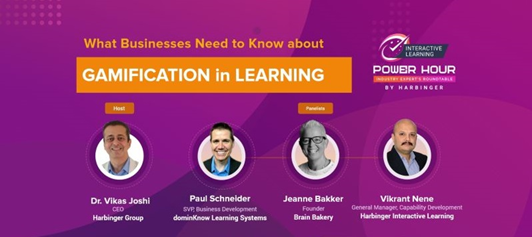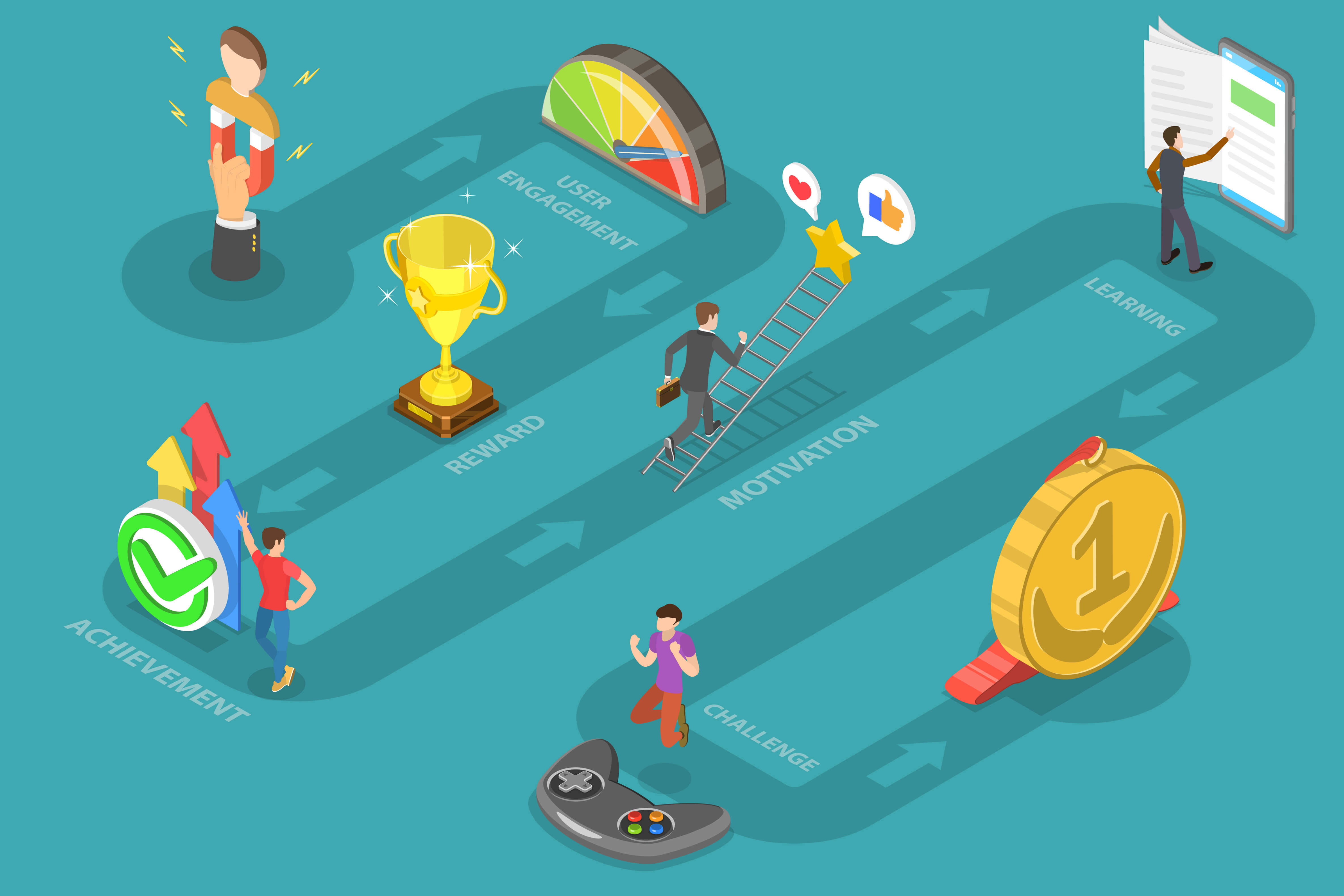In another gamification success story, LivingSocial decided to turn its annual reviews into gamified experiences, which resulted in more than 90% voluntarily participating.
Gamification in eLearning is a lot more than playing simple games to complete certain levels. It involves psychological reasoning and game design-thinking techniques to meet learning outcomes.
In the earlier blogs, we saw how to build a gamification strategy, and which are the best gamification design elements. Keeping up with that here is a quick look at the benefits of gamification as well as the challenges one can face when introducing gamification in eLearning.
Benefits of gamification in eLearning
The role of gamification is rapidly increasing as it is proving to be a great tool in enhancing the learning experience. For instance, wouldn’t a scenario-based game be more fun to complete rather than a couple-of-questions-long MCQ quiz as part of an onboarding process?
According to a recent study by MarketsandMarkets, the gamification market size in 2020 had a global value of $9.1 billion and is predicted to register an impressive growth rate of 27.4%, reaching $30.7 billion by 2025. No wonder gamification is one of the top 10 must-have features of a learning management system (ProProfs, 2021).
Gamification creates an informal setting where a learner is motivated to explore a topic with an open mind. Here are the top 5 benefits it results in:
1. Increased learner engagement – Any learning content will have specific goals. Unless the learners are excited about knowing more, the objectives cannot be accomplished. A creative course content challenges the learner to think, explore, and eventually increases the engagement level.
2. Better feedback mechanism – Game-based learning allows educators to provide unique ways of giving feedback to the learners, which is essential for understanding the performance curve. It also helps in identifying the knowledge gaps.
3. Improves knowledge retention – Gamification makes knowledge absorption easy. The game dynamics improve productivity, making the environment conducive for retaining information.
4. Creates a framework for microlearning – Simplifying the content into nuggets is an attractive and easy way of learning large portions of content. A gamification design can intrigue a learner to pick up information bites, thus keeping them motivated to learn more.
5. Promotes learning culture – This benefit is especially true in the case of using gamification for recruitment and onboarding process. Gamification can increase participation among fellow employees and help them bond right at the start.
Gamification has enabled eLearning to become more creative. The design can have surprise elements to up the curiosity quotient for the learners. For a corporate trainer, it can have real-life scenarios to check employee responses. All in all, gamification has elevated the digital learning process for learners of all ages and groups. Of course, there do exist some challenges while implementing gamification and it would only be fair to take cognizance of those as well.
Challenges of gamification
Whenever companies decide to go for gamification, they are slightly hesitant at the beginning. They worry how the gamified content will look like, whether it will look like serious learning, and if their learners might not like the game. This creates the following 3 main challenges when designing gamified content:
1. Cannot have a standard design template – There is no one-size-fits-all design for eLearning, and it needs to be customized to suit the learning needs of all the learners.
2. Too many gamification elements can cause distraction – A game can easily confuse a learner as well. Introducing all possible components, such as points, badges, levels, and rewards at one go can reduce the learner’s attention from the main focus.
3. Content needs to stay relevant – A good measure here is to see if the gamified content is achieving the learning goals. It may need to be modified as the learner demographic changes or as, for example, an employee training module is revised.
In short, a well-designed gamified content needs to stick to the learning objectives. It cannot take the learner away from the real purpose. Gamification should push the learners to achieve a new level and help them learn quickly.
Harbinger recently hosted a Power Hour on ‘What Businesses Need to Know about Gamification in Learning’ with industry experts Paul Schneider, SVP – Business Development, dominKnow; Jeanne Bakker, Founder of Brain Bakery; and Vikrant Nene, General Manager – Capability Development, Harbinger Group. This interactive webinar was hosted by Dr. Vikas Joshi, CEO of Harbinger Group.

An interesting point that Jeanne brought up in this session was how learning must get you out of your comfort zone. According to her, the main principle to remember while designing a game is – when the comfort level goes down, the eagerness to learn goes up. As an educator, we have control over how the gamified content needs to look like. So, with games, we can reduce the learners’ comfort zone a little and make their eagerness to learn go up.







